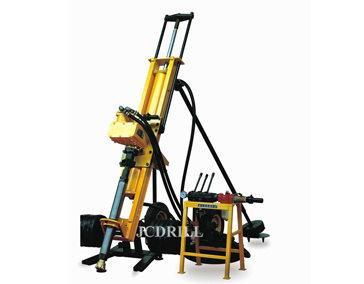+86 10 8467 3566
+86 10 8467 3566
Dec. 12, 22
Drilling rigs are used to drill, lower and cement casing in wells and provide the means to perform various ancillary functions such as logging and well testing. Today's rigs are very complex and require experienced and well-trained personnel to operate them efficiently. If not selected correctly, rigs can result in low drilling rates, formation damage due to poor solids control, and ultimately high drilling costs.
In years past, rig selection was usually based on shot grade. A 20,000-foot rig would be selected for a 19,000-foot prospect. This means that the rig can safely drill to 20,000 feet. It also means that the rig can perform all the associated activities required to drill and complete a well at 20,000 feet. Some 20,000ft rated rigs cannot meet the rigorous requirements of 20,000ft drilling for any of the following reasons.
Large-diameter, full-length production casing columns cannot be used because the derrick or substructure cannot support the casing load
Mud pumps, pump horsepower, rotary systems, or winches cannot be operated in deep environments
Inefficient solids control systems for high-density muds
Poor BOP systems
Many companies put more effort into rig selection because it is important to the safety, efficiency, and cost of the well.

Rock Blasting Drilling Rig
The correct procedure for rig selection is to determine or design the various loads that will be placed on the equipment and select the most cost effective rig that will meet these requirements. The drilling contractor provides detailed rig specifications for this purpose. When these specifications are compared with the well forecast, the appropriate rig can be selected.
A drilling rig can be subdivided into component systems for design and sizing purposes. Although the following groupings of systems are arbitrary, they can be used as the basis for the selection process.
Force
Lifting
Derricks and substructures
Rotating
Circulation
Pressure control
These categories, although broad in scope, cover the most important aspects of rig design requirements.
Rig selection occurs after rig selection and is not entirely quantitative. While the objective is to select the most cost-effective rig, a number of factors must be considered.
Drilling Rig
Qualifications of rig manpower, i.e. experience and training track record
Logistics handling
Drilling site requirements
Rig selection can be even more complex if availability is poor or if long-term contractual commitments for multiple rigs require the use of a rig that is not suitable for a particular well.
Always ensure that you select a drilling rig according to the terrain you are going to work on.
Check the rig thoroughly before you buy it. Check to ensure that it meets all quality standards and has enough drilling fluid to avoid any accidents or mishaps.
Proper maintenance is the key to prolonging the life of the rig. Always maintain it regularly to avoid any breakdowns.
Safety, reliability, and ease of use are also important factors to consider before buying.
Ensure that the drilling contractor you deal with is committed to delivering the rig on time, without any delays, and provides excellent after-sales service. This is vital if any breakdowns occur.
Be alert to the speed and power of the rig. This can help save your workers a lot of time and increase efficiency during the drilling process.
Be sure that the drilling contractor to whom you are placing your rig order has a global presence and a satisfactory customer rating. This gives a sense of credibility and trust in the market.
Previous: 5 Reasons to Invest in Drilling Rigs
Next: 5 Main Types of Rigs